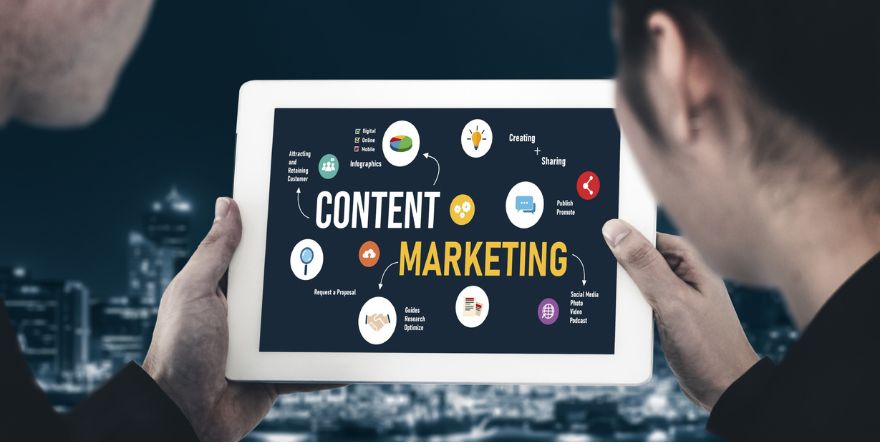The Future Of Content Distribution: Leveraging Multi-Channel Strategies For Maximum Reach
Consumers today are flooded with content from every direction—social media, blogs, podcasts, and more. With so much noise, it’s increasingly difficult for marketers to capture attention. Simply creating content isn’t enough; the real challenge is ensuring that your message reaches the right audience at the right time. A multi-channel content distribution strategy allows brands to cut through the clutter by engaging consumers on the platforms they frequent most. Let’s dive into how embracing this approach can elevate your content and expand your brand’s reach.
The Shift in Consumer Behavior
Consumer behavior has undergone significant changes over the past few years. Technology plays a major role in this shift, providing consumers with new ways to engage with content. Today, consumers don’t just visit a brand’s website for information—they’re also engaging with the brand on social media, listening to podcasts, reading emails, and more. The challenge for marketers now is to meet consumers where they are, across multiple platforms, with consistent and high-quality content.
This change in behavior means that marketers need to adapt their strategies accordingly. If your brand’s content isn’t being distributed across multiple channels, you risk losing visibility and relevance. It’s no longer enough to focus solely on written content; diversifying your content formats is key. Consumers want to experience content in different ways—whether that’s through written blogs, engaging videos, or insightful podcasts. Failing to meet these expectations can lead to disengagement and missed opportunities.
Why a Multi-Channel Strategy is Crucial
Having a multi-channel content distribution strategy is now more important than ever. Consumers interact with brands through various touchpoints, and each of these touchpoints presents a unique opportunity to engage with your audience. For example, a consumer might watch a product tutorial on YouTube, sign up for your email newsletter, and then download an eBook to dive deeper into your brand. Each of these interactions is a chance to build a relationship and keep your brand top of mind.
By diversifying your content distribution strategy, you ensure that your message is reaching consumers in the format they prefer. Whether it’s a quick social media post, a long-form article, or an in-depth podcast episode, offering content across multiple channels increases your chances of being seen and heard. Moreover, consumers today expect a consistent experience across every channel. Whether they’re interacting with your brand on Instagram, LinkedIn, or your website, they expect the same high-quality, personalized experience.
The Importance of Personalization in Content Distribution
Personalization has become a critical component of modern marketing. In fact, 71% of consumers expect personalized interactions with brands, and 76% are frustrated when those expectations aren’t met. With the rise of artificial intelligence and other advanced technologies, hyper-personalization has become more achievable than ever before. AI tools can track consumer behavior and deliver tailored content based on previous interactions, ensuring that each piece of content is relevant to the individual consumer.
For example, imagine a consumer who’s recently shown interest in purchasing snowboarding gear. Through a personalized email, your brand could offer them a discount on the very item they were eyeing, increasing the likelihood of a conversion. By leveraging AI-powered tools and retargeting, marketers can deliver more personalized, impactful content that speaks directly to the consumer’s needs and desires.
Mobile-First Strategy: A Must for Today’s Marketers
As mobile usage continues to dominate, marketers must ensure that their content is optimized for mobile devices. In 2025, mobile devices accounted for 76% of eCommerce site visits, compared to just 23% from desktops. With consumers increasingly relying on their smartphones for content consumption, having a mobile-friendly experience is no longer optional—it’s a necessity.
To stay competitive, businesses need to ensure that their websites are mobile-optimized, emails render correctly on mobile devices, and video content is easily accessible on smartphones. Failing to prioritize mobile optimization could result in a frustrating experience for users and lead to lost opportunities.
Benefits of a Multi-Channel Content Distribution Strategy
There are several key benefits to implementing a multi-channel content distribution strategy. Let’s take a look at a few of the most important ones:
- Increased Visibility: The more platforms you’re present on, the more likely it is that your brand will be seen by potential customers. Whether it’s social media, email, or podcasts, being available on multiple touch points ensures that your brand stays top of mind.
- Trust Building: Consistency across all channels helps foster trust with your audience. When consumers encounter the same high-quality experience on every platform, they’re more likely to feel confident in your brand and become loyal customers.
- Diversifying Content Formats: Written content might be a consumer favorite, but it’s not the only format that resonates with audiences. Video, podcasts, and infographics are growing in popularity. By diversifying your content formats, you meet the needs of all your customers—those who prefer reading, watching, or listening.
- Mitigating Risk: Relying on just one platform for content distribution is risky. If that platform experiences a downturn or your audience shifts to another channel, your content reach could suffer. A multi-channel strategy spreads your risk and ensures that you’re not putting all your eggs in one basket.
- More Opportunities for Engagement: As multi-channel marketing continues to gain traction, more brands are seeing success in reaching their customers across multiple touchpoints. By expanding your reach, you open the door to more opportunities for engagement, conversions, and ultimately, sales.
Crafting Your Multi-Channel Content Distribution Strategy
A successful multi-channel content distribution strategy requires careful planning and execution. It’s not just about being present on every platform; it’s about being strategic with your resources and efforts. Here are some key steps to help you develop your strategy:
- Know Your Audience: Understand where your target audience spends their time online, what types of content they prefer, and how they consume information. Use analytics tools to gain insights into consumer behavior, and tailor your strategy accordingly.
- Repurpose Content: Creating content for multiple platforms and formats can be time-consuming. Repurpose your existing content to maximize its reach. For example, a long-form eBook can be broken down into smaller blog posts or a series of social media updates.
- Integrate Technology: Leverage AI-powered tools to streamline content creation, improve SEO, and automate tasks. Technologies like Marketo and HubSpot allow you to manage email campaigns, social media posts, and analytics all in one place.
- Allocate Resources Wisely: Not all channels are equally valuable for every business. Focus your resources on the platforms that best align with your audience and goals. Prioritize the channels that will bring you the most return on investment.
- A/B Testing: Your content distribution strategy will evolve over time. Use A/B testing to experiment with different messaging, posting schedules, and content formats to see what works best for your audience.
Partner with our Digital Marketing Agency
Ask Engage Coders to create a comprehensive and inclusive digital marketing plan that takes your business to new heights.
Contact Us
Conclusion
The future of content distribution is multi-channel, and businesses must be ready to adapt. By understanding how consumer behavior has shifted and embracing a multi-channel content distribution strategy, brands can stay ahead of the curve. The key to success is diversification—both in the content formats you use and the platforms you target.
Incorporating new technologies, staying agile in your approach, and continually refining your strategy based on data will ensure that your brand remains relevant in an evolving digital landscape.








